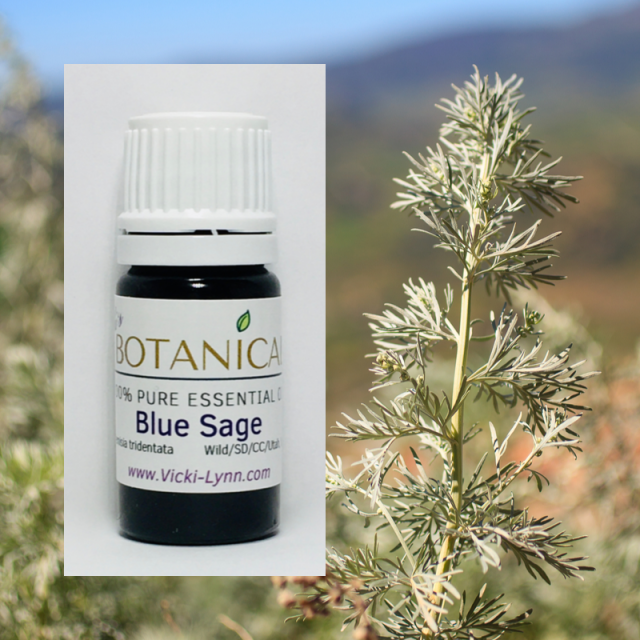- Vicki's Botanicals
- >
- Blue Sage
Blue Sage
BLUE SAGE ESSENTIAL OIL
Size: 5 ml. violet glass bottle
Source: Utah, USA
Production method: Steam distillation
Botanical name: Artemisia tridentata
Note: Also known as black sage. This oil has a strong spiritual presence that is immediately noticeable when inhaled.
NOTE: Shipping fee's will be invoiced separately
Homeopathic Properties:
• Anti-bacterial • Anti-diaphoretic: suppresses perspiration • Anti-galactogogue: suppresses lactation • Anti-infectious • Anti-inflammatory • Anti-microbial • Anti-sclerotic • Anti-septic • Anti-viral • Balsamic • Decongestant • Disinfectant • Emollient: hydrating to skin • Estrogenic • Expectorant • Hypotensive • Stimulant: immune system, endocrine system, circulation • Tonic: endocrine system, hormonal, reproductive system, circulatory system
Uses:
Internal–oral in homeopathic doses, inhalation, suppository
External–topical application, skin application, spinal and localcompress, application to energy centers and meridian points
Aromatic Profile
Top note: Bitter, woody, herby, spicy sage-like
Heart note: Menthol-like, bitter, woody, herby
Base note: Warm, balsamic undertone
Classification: Heart note
Tenacity: Medium high
Observations and Anecdotal Information
Blue Sage is a plant that grows predominantly across much of Utah’s and Arizona’s wild lands. Because it is distilled at a high elevation, the temperature required to reach the boiling point is lower, resulting in an oil that is less affected by heat exposure.
The resulting oil carries more of the plants true essence in the aroma. It smells exactly like the heavenly aromatic gift that is released by picking a sagebrush leaf and rubbing it between your fingers.
Indigenous peoples have used this form of sage for smudging ceremonies. It facilitates the cleansing of environmental energy and of the human energy field.
A local distiller says about this oil, “Indigenous cultures have used (blue sage essential oil) for coughs, colds, headaches, stomach aches, fevers, internal bleeding and to relieve pain during child birthing. Poultices of wet leaves applied to bruises reduce swelling.
Navajo weavers boiled the leaves and flowers to create a yellow-gold color, used to dye wool. Ute Indians wove the shredded bark into wicks for candles, and they made sacks of woven bark and lined them with grass”.
This essential oil, in my experience, is more active on the etheric and energetic levels than most. It has a similarity in frequency to a flower essence, and has already become one of my most endeared oils.
Cautions
- Avoid use with children and infants.
- Avoid use with pregnant and lactating women.
**Shipping fee's will be invoiced separately**
The information on this website is not intended or implied to be a substitute for professional medical advice, diagnosis or treatment. These statements have not been evaluated by the Food and Drug Administration. If you are pregnant, nursing, taking medication, or have a medical condition, please consult your physician and do your research before using these products. All information is provided for educational purposes and should not be viewed as health claims.


